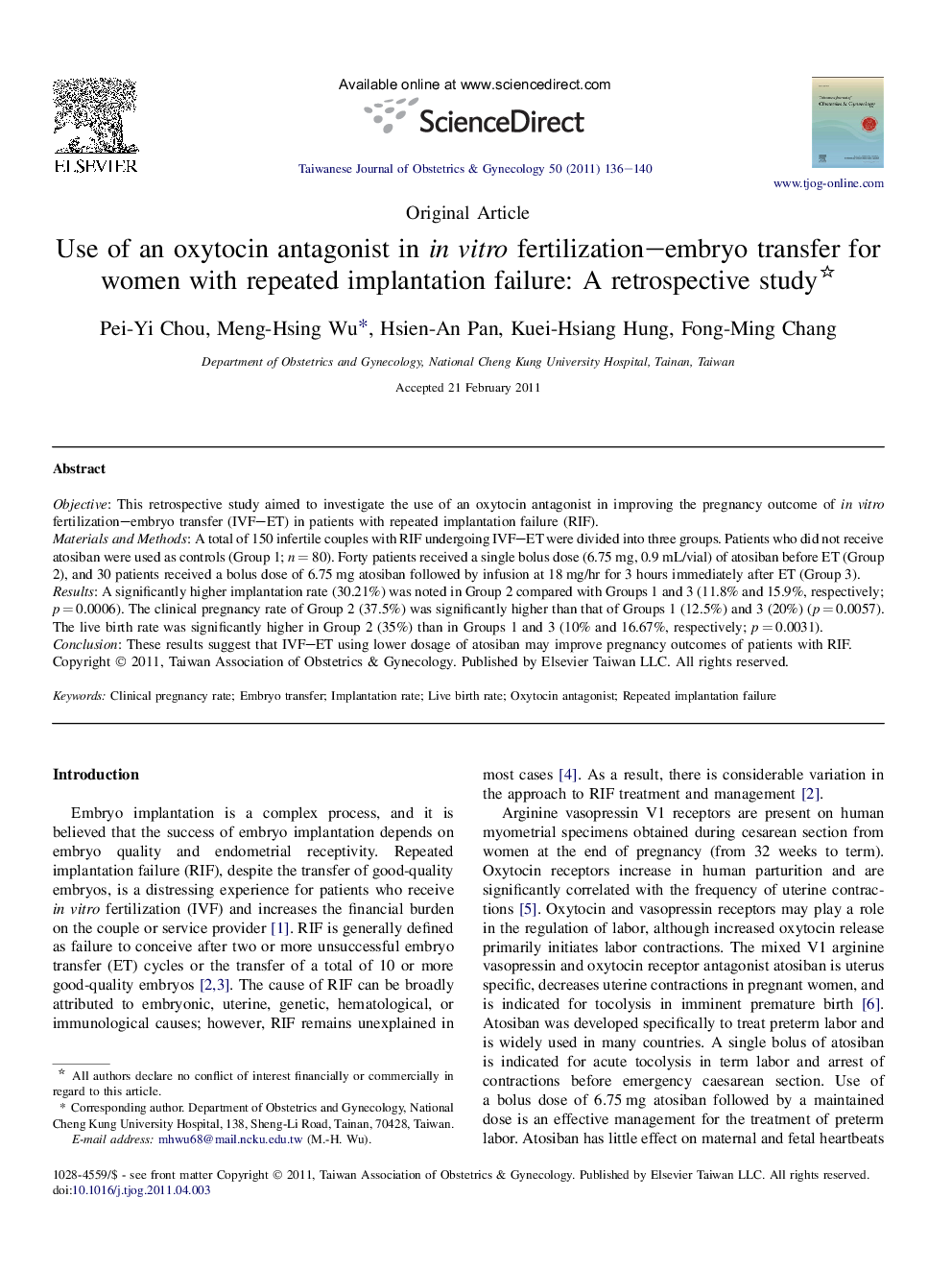| Article ID | Journal | Published Year | Pages | File Type |
|---|---|---|---|---|
| 3975787 | Taiwanese Journal of Obstetrics and Gynecology | 2011 | 5 Pages |
ObjectiveThis retrospective study aimed to investigate the use of an oxytocin antagonist in improving the pregnancy outcome of in vitro fertilization–embryo transfer (IVF–ET) in patients with repeated implantation failure (RIF).Materials and MethodsA total of 150 infertile couples with RIF undergoing IVF–ET were divided into three groups. Patients who did not receive atosiban were used as controls (Group 1; n = 80). Forty patients received a single bolus dose (6.75 mg, 0.9 mL/vial) of atosiban before ET (Group 2), and 30 patients received a bolus dose of 6.75 mg atosiban followed by infusion at 18 mg/hr for 3 hours immediately after ET (Group 3).ResultsA significantly higher implantation rate (30.21%) was noted in Group 2 compared with Groups 1 and 3 (11.8% and 15.9%, respectively; p = 0.0006). The clinical pregnancy rate of Group 2 (37.5%) was significantly higher than that of Groups 1 (12.5%) and 3 (20%) (p = 0.0057). The live birth rate was significantly higher in Group 2 (35%) than in Groups 1 and 3 (10% and 16.67%, respectively; p = 0.0031).ConclusionThese results suggest that IVF–ET using lower dosage of atosiban may improve pregnancy outcomes of patients with RIF.
